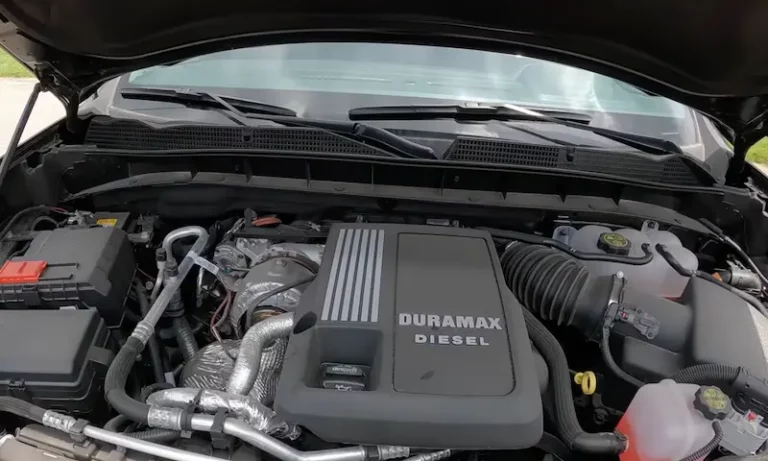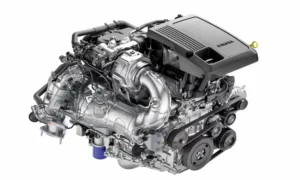Experiencing limp mode in your Duramax engine can be an inconvenience, impeding your truck’s performance. This protective measure is initiated by your vehicle’s computer when it detects an issue, effectively reducing power to prevent damage. Your engine’s call for attention doesn’t have to put a stop to your day, as resetting from limp mode is often straightforward.
Learning how to reset limp mode is essential for every Duramax owner, helping you to swiftly regain full control of your vehicle. Whether you encounter this mode due to transmission problems, sensor issues, or DEF fluid irregularities, understanding the reset procedure will get you back on the road with confidence.
Understanding Duramax Limp Mode
When your Duramax engine enters limp mode, it’s trying to protect itself from damage due to detected issues. It’s critical for you to recognize what triggers this mode, the symptoms to look out for, and understanding why it happens can save you from a roadside headache.
The Concept of Limp Mode
Limp mode is essentially your truck’s way of saying, “I need a break.” It’s a safety feature that the Duramax’s computer activates when it finds something wrong that could harm the engine. While in limp mode, the engine power is significantly reduced, and the vehicle operates in a restricted manner ensuring you can get to a mechanic without causing further damage.
Causes of Limp Mode in Duramax
Your Duramax might go into limp mode for several reasons. Sensors, like the throttle position sensor, play a pivotal role in monitoring the engine’s behavior. If a sensor sends a signal that is out of the expected range, your truck’s computer may trigger limp mode. This could be because of an actual mechanical problem or a faulty sensor reading. Particularly, the LLY Duramax engine has been noted for sensor issues that may cause this protective state.
Common Symptoms of Limp Mode
When your vehicle enters limp mode, there are some telltale signs. First off, warning lights on your dashboard may illuminate, alerting you to the issue. You’ll likely notice a sudden drop in engine power, which means your truck won’t accelerate like it normally does. Other symptoms include restricted gear changes, making it feel like the truck is laboring to move. If you experience this reduced engine performance, it’s crucial to address the problem immediately.
Diagnostic Procedures
Before diving into the reset steps for Duramax limp mode, you’ll first need to conduct thorough diagnostic procedures to uncover the root cause of the issue. These diagnostics are crucial for ensuring that any reset is effective and prevents future occurrences.
Reading Trouble Codes
When your Duramax enters limp mode, it’s vital to begin by reading trouble codes that the Engine Control Unit (ECU) or Powertrain Control Module (PCM) has stored. Limp mode is often triggered by specific faults within the engine or transmission, and these faults generate diagnostic trouble codes (DTCs). An example of a common transmission-related DTC is P0700, which indicates a general transmission problem.
Using a Scan Tool
To access these trouble codes, you’ll need to use an OBD-II scanner or scan tool. Connect the scan tool to the OBD-II port, usually located under the dashboard on the driver’s side of your vehicle. Once the tool is connected and the vehicle is powered on, you can use the scan tool’s interface to clear codes and gather important information.
- Steps to Use a Scan Tool:
- Locate the OBD-II port.
- Plug in the scan tool.
- Turn on the ignition, but do not start the engine.
- Follow the scan tool’s prompts to retrieve and clear codes.
Checking Engine and Transmission Sensors
A variety of sensors, including the throttle position sensor, play a significant role in the performance of your Duramax engine and transmission. If these sensors send incorrect signals to the ECU or PCM, it can trigger limp mode. Inspect sensors for signs of damage or disconnection and test them to ensure they are operating within the proper ranges.
- Common Sensors to Check:
- Throttle Position Sensor
- Transmission Range Sensor
- Vehicle Speed Sensor
By meticulously following these diagnostic procedures, you can accurately pinpoint issues that may cause limp mode in your Duramax. Once identified, addressing these concerns can help prevent recurring instances of limp mode and ensure your vehicle operates smoothly.
How to Reset Duramax Limp Mode
When your Duramax truck goes into limp mode, it’s designed to protect your engine from damage. You’ll likely notice reduced engine power, and the process to reset this mode involves a few steps which can range from simple DIY methods to using specialized tools.
Initial Steps to Reset Limp Mode
To start the reset process, you should first turn off your engine. Then, disconnect the battery’s negative terminal. This action helps to reset the onboard computer system. Wait for about 15-20 minutes before reconnecting the battery. This simple step could resolve the issue and is often the first attempt to clear a Duramax limp mode reset.
Clearing Codes with a Code Reader
If disconnecting the battery doesn’t do the trick, you might need a code reader. A code reader can identify specific trouble codes that triggered limp mode. Once you plug the reader into your truck’s diagnostic port, follow the device instructions to clear codes. If the codes clear, your engine will be out of limp mode.
Reset Techniques for Specific Duramax Models
Different Duramax models, including LLY, LBZ, and LMM, may have varied procedures when dealing with limp mode resets. For example, the LLY often requires a series of actions, such as cycling the ignition key on and off, while the LBZ and LMM might need a different approach like driving at a specific RPM for a certain amount of time. Always refer to your owner’s manual for model-specific reset information. If you’re unsure, it’s wise to consult a professional to avoid potential damage to your vehicle.
Troubleshooting Advanced Issues
When faced with Duramax limp mode, it’s crucial to address advanced issues that may not be immediately apparent. This section explores specific components that could trigger limp mode, helping you to identify and resolve complex problems.
Dealing with Transmission Complications
Your Duramax is equipped with an Allison transmission, renowned for its durability. Nevertheless, there are times when even this stalwart component can falter, putting your vehicle into limp mode. It is often a minor issue like a transmission fluid leak or potentially a major issue such as internal gear failure. You can reset the limp mode temporarily, but for transmission-related errors, checking the Transmission Control Module (TCM) is pivotal. The TCM’s health dictates the seamless operation of gear shifts.
Investigating Fuel System Anomalies
Fuel system issues can range from clogged injectors to problems with the fuel lines or lift pump. These could manifest as minor issues interrupting fuel flow or major issues that could compromise the engine’s integrity. Should you encounter erratic performance or limp mode activation, an inspection of the fuel system is advisable. Ensure the fuel lines are clear and the lift pump is functioning correctly to maintain optimal fuel pressure and engine performance.
Understanding Electronic Control Modules
The heart of your Duramax's electronic system involves several modules: the Engine Control Unit (ECU), Engine Control Module (ECM), and Powertrain Control Module (PCM). Each module governs critical aspects of your vehicle’s functioning and could be the source of both minor and major issues when things go awry. If limp mode is triggered by an electronic fault, you may need to reset or replace the affected module. Applying updates to the ECM, for instance, can sometimes resolve lingering issues that cause limp mode to engage.
By systematically checking these complex areas, you can often pinpoint the cause of persistent limp mode issues and take appropriate action to remedy them, restoring your Duramax's performance.
Unique Considerations for Duramax Engines
When you’re dealing with Duramax engines, it’s important to understand that they have certain model-specific idiosyncrasies and historical recalls or Technical Service Bulletins (TSBs) that can affect the process of resetting limp mode.
Identifying Model-Specific Issues
Various Duramax models, such as the LLY, LBZ, and LMM, each come with their own set of common issues that could lead to limp mode. With the LLY, for instance, overheating can be a trigger due to inadequate airflow to the radiator—a specific problem prevalent in models from certain years. In contrast, the LBZ is known for its strength but may face injector wiring harness issues, and the LMM is frequently recognized for its Diesel Particulate Filter (DPF) related troubles that can initiate limp mode.
Notable Duramax Recalls and TSBs
Throughout their production, certain Duramax models have been subject to recalls and TSBs that could contribute to the need for a limp mode reset. For example, some LBZ engines were part of a recall related to a potential fire risk associated with the diesel fuel injector. Keeping abreast of these recalls and TSBs for your specific Duramax engine is essential, not just for safety but also for troubleshooting and properly addressing limp mode issues when they arise.















